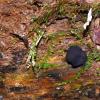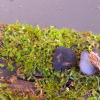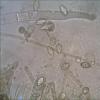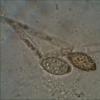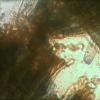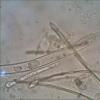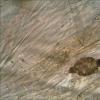
07-12-2025 16:07
Arnold BüschlenHallo, ich habe in einer Moos-Aufsammlung (epiohy

16-03-2014 22:00
Hello,I found this species a few months ago but ha

08-12-2025 13:39
Thomas Læssøehttps://svampe.databasen.org/observations/10572899

05-12-2025 17:33
 Bruno Coué
Bruno Coué
Bonjour, je serais heureux de recueillir votre avi

07-12-2025 09:24
De la pasada semana en Galicia EspañaEn el suelo

06-12-2025 00:19
 Viktorie Halasu
Viktorie Halasu
Hello, would anyone have this article, please? An
Discina ?? Mayotte
maurice pelissier,
29-04-2013 10:03
j'ai trouvé ce spécimen en forêt tropicale sur bois pourri recouvert de mousse voici ses caractéristiques :
Chapeau : 1,3 à 1,5 cm surface hyméniale brun noir a noir violeté avec nuances rougeâtres dans la chair Stipe sans, Spores largement ellipsoides fortement ponctuées 9,7 – 12,1 X 17 – 19,4 – 21,8 hyalines dans la jeuness puis brunissant les mures brunes munies de 2 appendices apiculaire tronqués Paraphyses se terminant en bouton (8,5) Asque operculé faiblement amyloides jeunes 223 x 15,8
?
Neven Matocec,
29-04-2013 10:37

Re : Discina ?? Mayotte
Hello Maurice,
Great catch!
I've been rather inactive on the forum recently and had options to answer unfortunately in only very limited occasions. This will hopefully improve in next weeks when my new house should start to be operational for living and work.
This very interesting collection should much more likely represent Peziza s.l. around the Peziza obtusapiculata/prosthetica than a Discina.
Quite differently to a Hypocreoid fungi you sent me last year (also from Mayotte), this collection we could much more efficiently solve. We would very much like to compare it with some other collections of tropical apiculate pezizas.
If you could dry these apothecia in a room temperature, you can send me again the material, but this time to a different address. Please use my e-mail address for further details.
Cheers,
Neven
Great catch!
I've been rather inactive on the forum recently and had options to answer unfortunately in only very limited occasions. This will hopefully improve in next weeks when my new house should start to be operational for living and work.
This very interesting collection should much more likely represent Peziza s.l. around the Peziza obtusapiculata/prosthetica than a Discina.
Quite differently to a Hypocreoid fungi you sent me last year (also from Mayotte), this collection we could much more efficiently solve. We would very much like to compare it with some other collections of tropical apiculate pezizas.
If you could dry these apothecia in a room temperature, you can send me again the material, but this time to a different address. Please use my e-mail address for further details.
Cheers,
Neven
Nicolas VAN VOOREN,
29-04-2013 10:37

Re : Discina ?? Mayotte
Bonjour.
As-tu vérifié la réaction des asques au Melzer ou au Lugol ? Je pense que ça pourrait être plutôt une espèce du genre Peziza. La forme générale de la spore, avec de tels capuchons apicaux, me fait penser à Peziza thozetii Berk., bien que l'ornementation paraisse plus grossière.
A creuser.
As-tu vérifié la réaction des asques au Melzer ou au Lugol ? Je pense que ça pourrait être plutôt une espèce du genre Peziza. La forme générale de la spore, avec de tels capuchons apicaux, me fait penser à Peziza thozetii Berk., bien que l'ornementation paraisse plus grossière.
A creuser.
René Dougoud,
29-04-2013 11:03
Re : Discina ?? Mayotte
Bonjour cher Collègue,
L' amyloïdie des asques conduit vers les genres Peziza ou Pachyella, ce dernier genre si l'exc. ectal est palissadique. Je pense cependant qu’il s’agit d’une espèce du genre Peziza.
A rechercher, de par la couleur de l’apothécie, vers P. cornui ou P. neocornui. Je n'ai pas d'autre proposition ?
Amicalement
René

